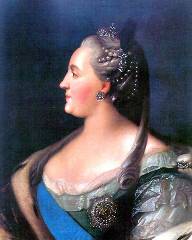|
Путеводитель по Крыму
Группа ВКонтакте:
Интересные факты о Крыме:
В 15 миллионов рублей обошлось казне путешествие Екатерины II в Крым в 1787 году. Эта поездка стала самой дорогой в истории полуострова. Лучшие живописцы России украшали города, усадьбы и даже дома в деревнях, через которые проходил путь царицы. Для путешествия потребовалось более 10 тысяч лошадей и более 5 тысяч извозчиков. |
Главная страница » Библиотека » Н.Н. Калинин, А. Кадиевич, М.А. Земляниченко. «Архитектор Высочайшего Двора»
SummaryAppreciating the creative activities of a prominent Crimean architect Nikolay Petrovich Krasnov as an artist who made an important contribution to the development of contemporaneous tendencies of architecture, a well-known art critic F.G. Berenshtam wrote: «Comparatively few architects were lucky to build in such conditions. But N.P. Krasnov was that lucky man». A young graduate of Moscow College of Painting, Sculpture and Architecture, he came to Yalta in summer 1887 and was accepted for a job as a town architect. He was 23 that time. Nikolay Petrovich was charmed by the exotica of Crimean scenic landscapes, which stimulated the desire to build something extraordinary and romantic. Krasnov managed to catch the specific character of Yalta, «the spirit of tf% place», as Old Romans said. He realized, that town gave people health and the happiness of contact with a wild nature and its architecture should correspond the endless diversity of the unique place. His main creative search Nikolay Krasnov aimed to harmonious combination of new principles in architecture — free arrangement and moulding of the bulks of a building with decorative elements of different historical styles. The architect talent of Nikolay Petrovich manifested itself in the planning and building of the town of Yalta, but it left the most brilliant track in the construction of villas and park-and-palace complexes in the Southern Coast of Crimea. Krasnov's clients were not only distinguished aristocrats, industrialists, military men and artists, but the Imperial family of Romanovs itself. Among the amount of buildings which Nikolay Petrovich erected in 1895—1914, when he was in the peak of his creative activities, we can designate the world-known Livadia palace — summer residence of the last Russian Emperor Nicholas II; Dyulber palace, the property of Grand Prince Pyotr Nickolaevich; the Temple of Christ's Transfiguration and St. Nina and the palace in Kharaks estate of Grand Prince Georgy Mikhailovich; palaces of the Yusupovs in Koreiz and Kokkoz; villa «Ksenia» in Simeiz and the building of the bank of «The Society of Mutual Credit» in Simferopol. In October 1911 N.P. Krasnov was awarded the tittle of the Architect of the Imperial Court and in 1913 St. Petersburg Academy of Arts confered the tittle of an Academition on him. In the time of the Civil War, in 1919, Nikolay Petrovich emigrated first to Malta then, having been invited by the Government of Kingdom of Serbs, Croatians and Slovenes (from 1929 — the Kingdom of Yugoslavia), he moved to Belgrade. Yugoslavia became the second motherland for the Russian architect. It gave the refuge to his family and the opportunity to work for the artist. There he fulfilled some serious State and Royal Court orders, restored buildings of temporal and church architecture, erected monuments to warriors killed in the First World war. N.P. Krasnov died on December 8, 1939 and was buried on Russian sector of Belgrade cemetery. Hardly any other art reflects a certain historical period of social life as vividly and figuratively as architecture does. And the creative heritage of N.P. Krasnov proves this truth. Palaces and villas of the Southern coast, constructed in the beginning of the XX-th century, impress by their originality and refine artistic taste, harmonic combination of various architectural styles and create the image of pre-revolutionary Russia. Strict academic manner of magnificent administrative buildings in Belgrade, erected by the Russian architect, embodied the idea of strengthening of young Yugoslavia State System.
|
Столица: Симферополь
Крупнейшие города: Севастополь, Симферополь, Керчь, Евпатория, Ялта
Территория: 26,2 тыс. км2
Население: 1 977 000 (2005)
Крупнейшие города: Севастополь, Симферополь, Керчь, Евпатория, Ялта
Территория: 26,2 тыс. км2
Население: 1 977 000 (2005)

